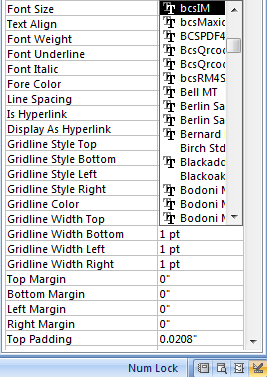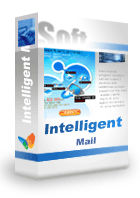Intelligent Mail Barcode Font
Keywords:
USPS Intelligent Mail Barcode, USPS 4-State Custom Barcode, USPS OneCode Solution
Before you print Intelligent Mail Barcode, please apply for an Intelligent Mail Mailer ID from USPS.
The Intelligent Mail barcode is also known as USPS OneCode solution or USPS 4-State Customer Barcode (4CB, or USPS4CB).
The Intelligent Mail barcode comprises 65 bars. The Intelligent Mail barcode or OneCode combines both ZIP Code and tracking information together and provides benefits to both mailers and postal offices.
The Intelligent Mail barcode or OneCode will replace the POSTNET and PLANET barcodes. Business mailers using Intelligent Mail barcode or OneCode is qualified to earn USPS automation discounts.
The Intelligent Mail barcode or OneCode can encode up to 31-digits of mail-piece data into tracker, ascender, descender and full bar.
The Intelligent Mail barcode or OneCode has five data fields: Barcode Identifier, Service Type Identifier, Mailer Identifier, Serial Number, and Delivery Point ZIP Code.
1. The Barcode Identifier is a 2-digit number. The second digit is between zero and four. USPS will assign you a Barcode Identifier.
2. The Service Type Identifier is a 3-digit number assigned by USPS.
3. USPS will assign you a Customer Identifier. The Mailer is a 6-digit or 9-digit number.
4. You will assign a Sequence Number for tracking mail pieces. The total digits of Mailer Identifier and Serial Number are always 15.
5. The Delivery Point ZIP Code may be 0, 5, 9, or 11 digits.
It’s a smart and simple solution for mailers to use Barcodesoft Intelligent Mail barcode font. Mailers can print the Intelligent Mail Barcode or OneCode from Microsoft Office®.
When print at size 12, the printed intelligent mail barcode will meet USPS specification.
Mailers get postal savings, mail tracking visibility and higher efficiency.
Here are the nominal dimensions of BcsIM true type font characters
| Bar Height | Bar Width | Bar Spacing | |
|---|---|---|---|
|
BcsIM Point size 12 |
0.125 - 0.165 inch | 0.02 inch | 0.012 - 0.04 inch |
This is the pricing list of Barcodesoft Intelligent Mail Barcode Font package
| License | Single User | 5-User | 10-User | Site | Corporate | Developer | 5-Developer | 10-Developer | Unlimited Developer |
|---|---|---|---|---|---|---|---|---|---|
| Price | CAD159 | CAD299 | CAD399 | CAD599 | CAD799 | CAD999 | CAD1199 | CAD1399 | CAD1999 |
Generate Intelligent Mail Barcode in Crystal Reports
1. Open your crystal report. Right click Formula Fields, choose "New..." from the context menu.
Type in "OneCode" in the Name textbox, then click "Use Editor".
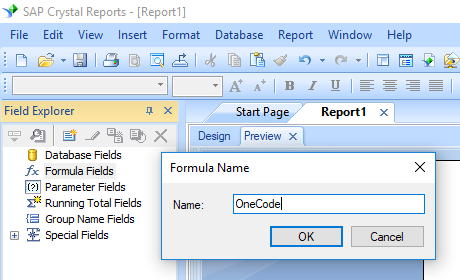
2. From Functions List ==> Additional Functions ==> COM and .NET UFLs (u212com.dll) ==> Visual Basic UFLs, double click to choose "BCSLinearIM" function as shown below.
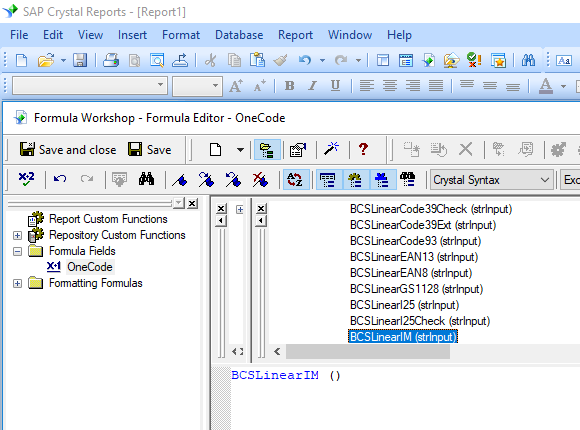
3. Please type in the database field as parameter for onecode formula. And click "Save" button to save onecode formula field.
4. Drag and drop the onecode formula field to your crystal report design view. You may see some strange characters. Don't worry! You haven't applied Intelligent Mail barcode font yet.

5. Please right click onecode formula field in your report and choose "Format Field" from context menu. Then choose "UpcEanM" as font typeface.

Click OK button. You will see intelligent mail barcode in your report.
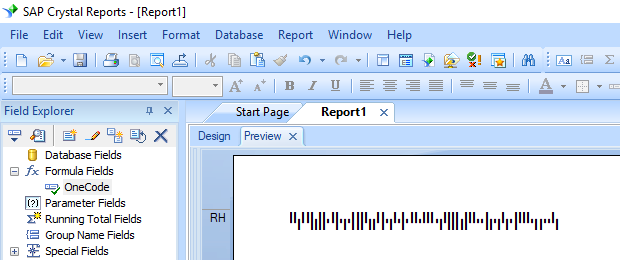
Generate Intelligent Mail Barcode in MS Excel Spreadsheet
1. Start Microsoft® Excel® first.
If you are using Excel 2000 or 2003, click menu ===> Tools ==> Macro ===> Security. Choose Low security level.

If you are using Excel 2007 / 2010 / 2013 / 2016 / 2019, click the Microsoft Office Button.
![]()
![]()
![]()
Then click Excel Options, choose Trust Center. In the Macro Settings category, under Macro Settings, choose "Enable all macros" as shown below.

2. Press ALT + F11 to open Microsoft® Visual Basic editor.
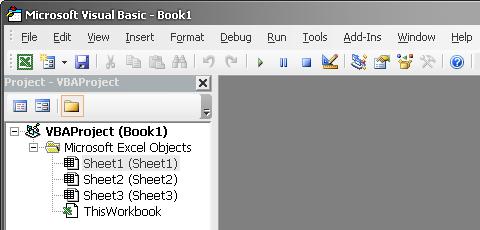
3. From Visual Basic editor, choose menu Tools ===> References. It will popup a dialog. Click Browse button and choose cruflbcs.dll from your working folder.
Usually it's under C:\Program File (x86)\CommonFiles\Barcodesoft\Fontutil folder.
Click the checkbox beside crUFLBcs 1.0 Type Library as shown below. Then click OK button.
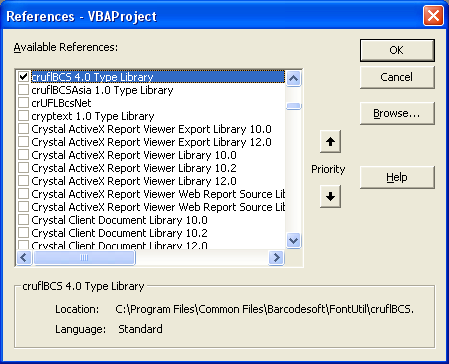
4. Press Ctrl+M, it will popup a dialog, choose barcodesoft.bas under C:\Program File (x86)\CommonFiles\Barcodesoft\Fontutil folder. Then click "Open".
If you don't find barcodesoft.bas, please download it from onecode.
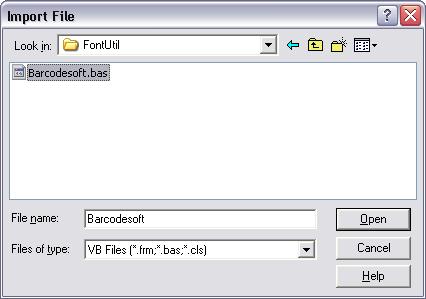
5. Close Visual Basic editor and go back to your spreadsheet. Now, you can use the following macros to encode data: onecode . When you have lots of data to process, you can just copy and paste the macro to the whole column and all data will be encoded immediately.
=onecode(xxx)
Please use cell reference to replace xxx in the formulas as shown below.
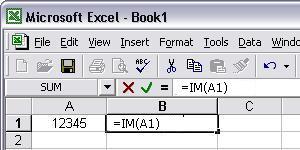
6. Right click Cell B1, choose Format Cell from context menu. Then click Font to apply one of the appropriate font typefaces to the cell, such as BcsIM. You will see onecode barcode in your spreadsheet.
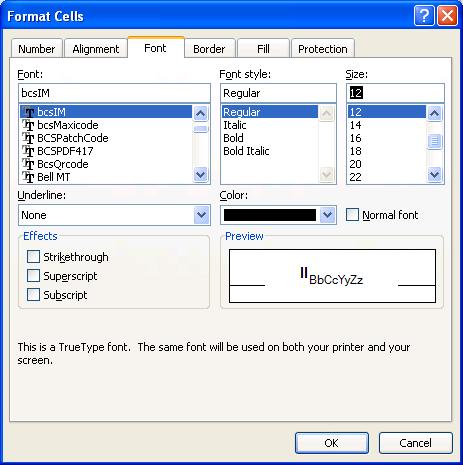
Generate Intelligent Mail Barcode in MS Access Database
1. Start Microsoft® Access® first.
If you are using Access 2000 or 2003, click menu ===> Tools ==> Macro ===> Security. Choose Low security level.

If you are using Access 2007 / 2010 / 2013 / 2016 / 2019, click the Microsoft Office Button.

![]()
![]()
Then click Access Options, choose Trust Center. In the Macro Settings category, under Macro Settings, choose "Enable all macros" as shown below.
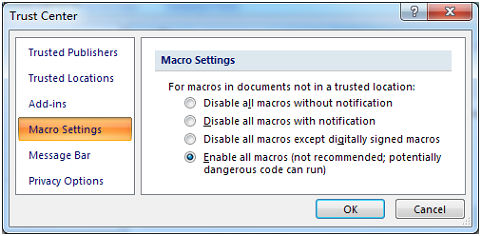
2. Press ALT + F11 to open Microsoft® Visual Basic editor.
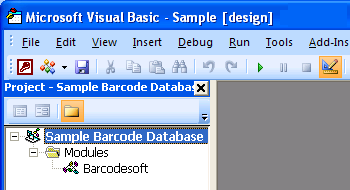
3. From Visual Basic editor, choose menu Tools ===> References. It will popup a dialog. Click Browse button and choose cruflbcs.dll from your working folder.
Usually it's under C:\Program File (x86)\CommonFiles\Barcodesoft\Fontutil folder.
Click the checkbox beside crUFLBcs 4.0 Type Library as shown below. Then click OK button.

4. Press Ctrl+M, it will popup a dialog, choose barcodesoft.bas under C:\Program File (x86)\CommonFiles\Barcodesoft\Fontutil folder. Then click "Open".
If you don't find barcodesoft.bas, please download it from onecode.

5. Close Visual Basic and go back to your Access database. Now, create a report in Design view and type in one of the following macros in the field where you want to show onecode barcode before apply font typeface:
=onecode([data.code])
Please notice that 'data' is the Table name, 'code' is the Field name.
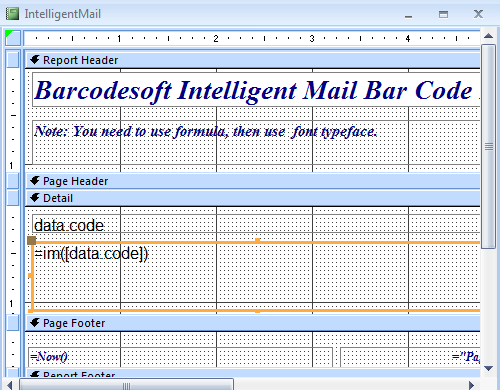
6. Right click the field you want to display onecode barcode. Choose Properties from context menu. Apply font typefaces BcsIM to the field. You will see onecode barcode in your Access report.
